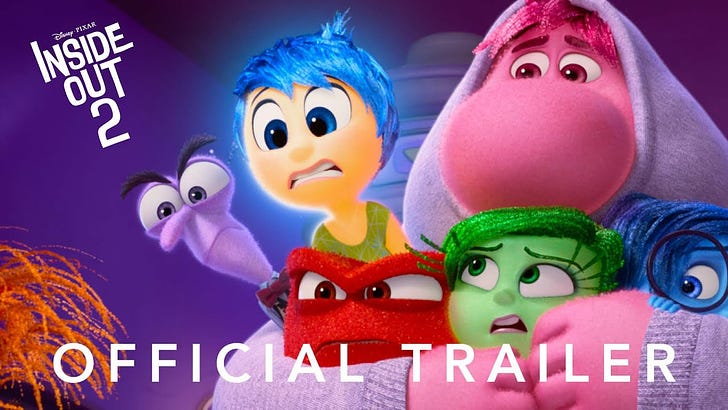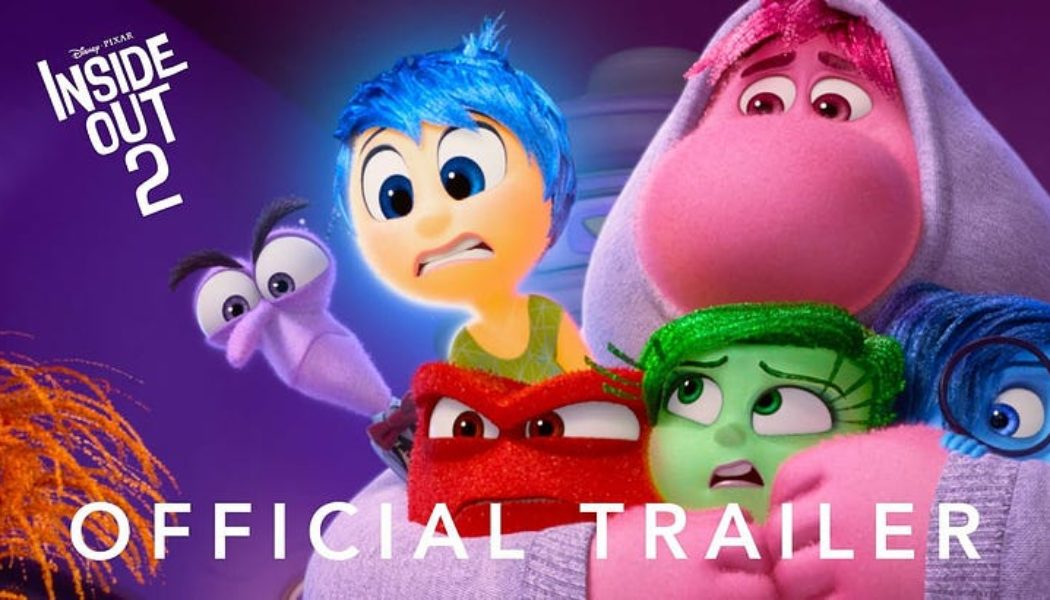
Dang it.
It’s only been a week or two since I used the “lighthouse” parable to illustrate an important hole in a pop-culture phenomenon. That post had this headline: “Flashback: Where was God, after the Thanos ‘snap’?”
Now, while Hollywood is enduring a season in box-office hades, we have “Inside Out 2” emerging as the year’s first billion-dollar hit (a success level that used to be rather common).
Ah, but as Stephanie H. Murray asked in a must-read feature at The Dispatch (Yes, I have been on that website quite a bit in recent days) that ran with this double-decker headline:
Where Are the Phones in ‘Inside Out 2’?
Pixar’s sequel captures teen anxiety, not what American teenhood is like today
And that question, friends and cyber-neighbors, brings me back to the “lighthouse” parable, which shares metaphorical DNA with the classic Sherlock Holmes “the dog that did not bark” murder-mystery riff.
Under ordinary circumstances, I use the “lighthouse” image to note a God-shaped hole in a chunk of mass-media product. But this time around, we are talking about a tech-shaped hole, which is linked to one of the most important moral issues in our culture these days (world culture, actually). I’m talking about debates on the role that smartphones play in those frightening hockey-stick charts about mental-health problems in the lives of young people.
Thus, for new Rational Sheep readers, here is a short version of the “lighthouse parable.”
Once there was a man who lived in a lighthouse on the foggy Atlantic. This lighthouse had a gun that sounded a warning every hour. The keeper tended the beacon and kept enough shells in the gun so it could keep firing.
After decades, he could sleep right through the now-routine blasts.
Then the inevitable happened. He forgot to load extra shells and, in the dead of night, the gun did not fire.
This rare silence awoke the keeper, who leapt from his bed shouting, “What was that?”
With that in mind, let’s look at the Murray essay about “Inside Out 2” — a movie that (1) uses an interesting plot device to remove smartphones from a key event in the life of a female teen and (2) pretty much ignores the issue altogether.
To be blunt, Murray notes that the original “Inside Out” — about the emotions at the control panel for the life of Riley, an only-child tween — “felt a little dated.”
Now, a new emotion has appeared on the scene.
Inside Out 2, released earlier this month with comedian Amy Poehler reprising her voiceover role as Joy, feels similarly in and out of step with the times. You’d be hard-pressed to find a more timely topic than teen anxiety, which has become the subject of endless books and think pieces over the past few years and takes center stage in Pixar’s sequel. Like its predecessor, the new film grapples with the topic in a mostly creative and insightful manner — but it somewhat clumsily avoids acknowledging the Instagram-scrolling elephant in the corner.
There isn’t a “faith” character in this Pixar vision, of course.
Instead, the lessons that Riley has learned from her healthy, concerned parents are represented by a “glowing tree-like structure” that, from time to time, “occasionally repeats the mantra ‘I am a good person.’”
This doctrine — think “follow your heart” Disney doctrine — helps her know right from wrong as she collides with puberty.
Let’s look at two chunks of Murray’s feature:
As the parent of a somewhat anxiety-prone daughter, I found the film’s depiction of childhood angst genuinely clarifying. My daughter and I have taken to anthropomorphizing her anxiety as a means of grappling with it. That said, we typically discuss it as something of a clueless imposter (we call it her “worry dragon”), a mostly unwelcome presence that would ideally go away. Inside Out 2, however, presents Anxiety as an ordinary emotion that means well and has a rightful place in our minds just like all the others. After Anxiety’s tyranny ends, the other emotions don’t boot her from headquarters but instead put her in her place — an armchair, where she drinks tea and serenely focuses on things she can control. It’s a subtle but useful distinction, especially given that TikTok-prompted self-diagnoses have made it far too easy to pathologize negative emotions.
The movie also gestures at the pitfalls of trying to maintain a selectively flattering self-image. By the time Riley’s Anxiety-shaped sense of self is complete, it is riddled with self-doubt. Joy manages to restore Riley’s original sense of self to headquarters, yet even that fails to quell the paralyzing whirlwind of angst that has taken over her mind. Only when Joy steps back and allows a more complicated self-image to flower from a broader pool of memories — with beliefs such as “I’m not good enough” and “I make mistakes” intermingling with those such as “I’m kind” and “I’m a good friend” — does Riley’s anxiety subside. The (subtly Christian) message seems to be that part of growing up is reckoning with our own brokenness. Shame, too, has its purpose.
OK, what role do smartphones and social media play in all of this emotional drama?
That’s the tech-shaped hole. For starters, a hockey camp plays a central role in the movie and the coach there, Murray noted, “conveniently confiscates her players’ phones at the start of camp.”
At several key moments in the movie, Riley is strangely clueless about the motives and opinions of the young people around her. In other words, she is not following them on social media. #DUH
Let’s end with this:
The absence of phones is only more striking given the film’s focus on teen anxiety. Even if you aren’t totally sold on the idea that phones are a major cause of the recent youth mental health crisis, there’s simply no doubt they play a role in it. At the very least, confiscating the phones from the movie seems like a missed opportunity to explore how the phones serve as a conduit for anxiety. And I find it hard to believe that, even with Riley’s phone locked away, social media wouldn’t feature somewhere within the paranoid visions of future failure and social ostracization that Anxiety drums up in Riley’s imagination.
Maybe I’m being needlessly grumpy. Still, the decision to oust smartphones and social media from the movie’s depiction of American teenhood was clearly deliberate. Why, then, does Inside Out 2 choose to do so? …
Perhaps the writers knew that with a smartphone in hand, an anxiety-riddled Riley would have spent the entire movie doom-scrolling.
By all means, Read It All. Oh, and I left out a key detail or two for those poised to head to theaters to check out this family-market hit.
But think about it: This movie is about the emergence of anxiety as a major force in Riley’s life. Why not face the role of smartphones in the real-world environment that shapes the lives of the vast majority of young females today?
Now, ask the same question about the vast majority of religious institutions, from local congregations to the denominational structures (yes, including seminaries) that shape them.
Just asking.









